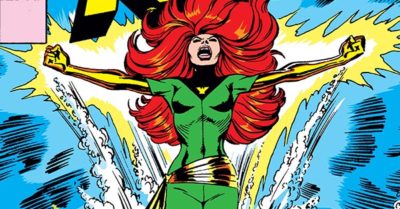This is available to everyone, but it was made possible via the support of Patrons of Crushing Krisis:
The Revised & Expanded X-Men Reading Order Guide – Era #2: Second Genesis
This era covers every X-Men story starting with Giant Size X-Men #1 in 1975 through “Days of Future Past” in Uncanny X-Men #141-142 in 1981. That includes every back-up from Classic X-Men.
The guide allows you to read every X-Men story from the period perfect continuity order, but also presents a simplified version of that order so you can enjoy bigger chunks of the most important stories without inserting every minor guest appearance.
This was a fun reading order to revise for a few different reasons.
First, I just love this period of Bronze Age X-Men. It’s one of the most classic comic book runs of all time, with beautiful prose and stunning illustration. It hits nary a false note and it is a joy to revisit for any reason.
(In fact, after my daughter launched a slew of X-Men questions at me just based on the imagines I chose for the guide, we wound up reading Giant Size X-Men together and she loved it!)
Second, it’s the only X-Men period that is comprised almost entirely of a single ongoing comic, yet it contains one of the most-complexcontinuity challenges!
This era is all Uncanny X-Men, with just a minor side serving of Captain Britain. Even the Silver Age period has The Hidden Years and Namor to factor in, plus gap years guest appearances. In this period it’s almost exclusively Uncanny X-Men (and Champions, I suppose, but that mostly happens in one big hunk).
However, it’s also the era of Classic X-Men back-up stories – 44 individual tales (by Claremont!) with significant continuity impact which fit (completely out of order) before, after, and sometimes duringthe 52 issues of ongoing X-Men in this period. These back-up stories used to be somewhat inaccessible, but thanks to the new X-Men Classic Omnibus they’re suddenly collected all in one place and on more bookshelves than ever before!
That combination of simple and complex let me focus on how I want to solve continuity and formatting challenges before things get a lot more complex in Eras #3-4.
Third (and contingent to second), the “simple complexity” of this era allowed me to focus on the Reading Order (and, Reading Orders, in general) less as a comic book continuity logic problem to solve and more as a piece of an overall technological solution to making comics easier to read and enjoy that I can continue to improve.
The information in a reading order doesn’t have to fundamentally change in order to improve. I can revisit an era where I’ve already worked out the order of all the books and still improve it by making it easier to comprehend.
To do that in an efficient fashion, I need to avoid reinventing the wheel when I make my improvements. I shouldn’t have to research the continuity again. I shouldn’t have to go back and question why I ordered one book ahead of another. 
All of that should be baked into the DNA of the guide, whether or not it is visible to the end-user, and this was the perfect period to act as a proof of concept for that.
While I am confident that the reading order is 99% correct, I am very interested in your feedback on the clarity and usefulness of the format. Specifically, I wonder if I can be more clear about optional runs of characters versus optional one-off guest appearances.
